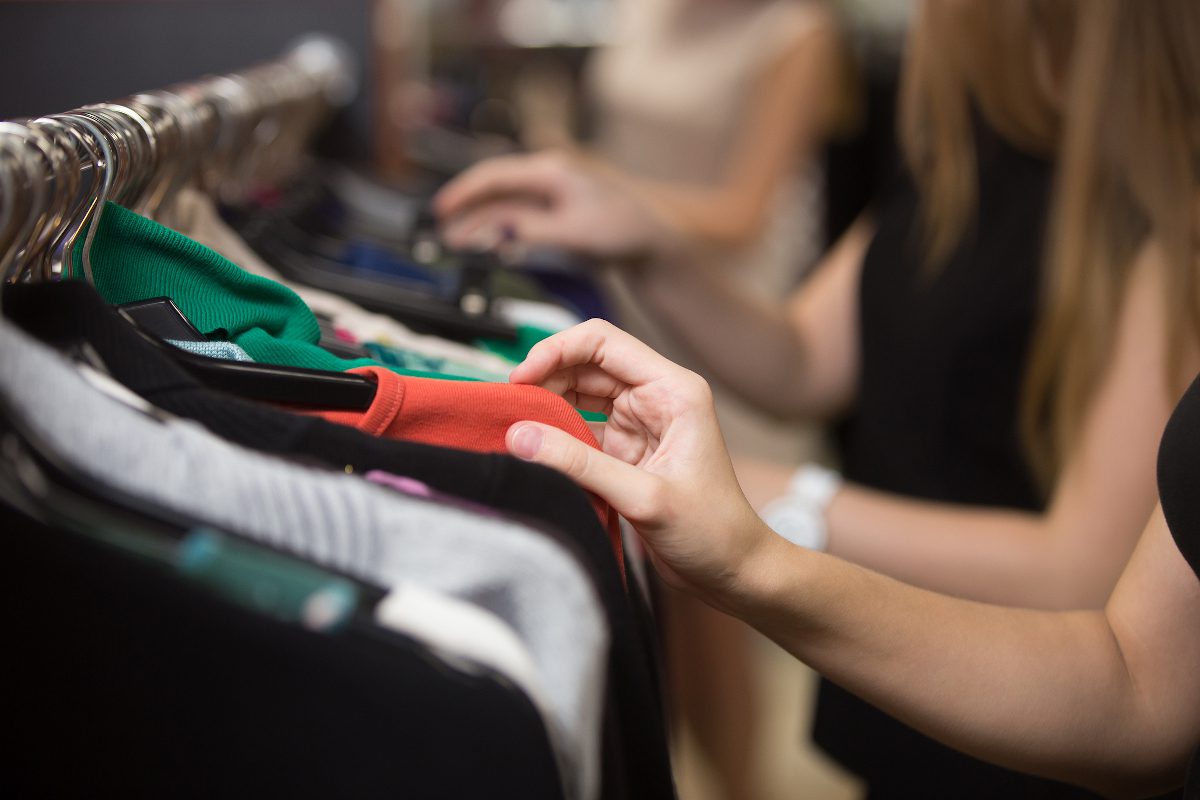
- While textiles and fashion are responsible for between 4% – 8% of global greenhouse gas emissions, WRAP finds the average UK adult has 118 items of clothing in their wardrobes of which one quarter (26% – 31 items) were unworn for at least a year.
- Adult UK population spends estimated £4 billion plus** shopping for clothes each month.
- And while many already buy and sell pre-loved clothes, more are open to alternatives schemes to ‘buy new’ shopping like subscriptions, preloved and rental.
A fashion revolution could help clothe the nation sustainably, says WRAP.
The largest study into clothing habits ever undertaken by climate action NGO WRAP shows changes over the last 8 years around how long we retain our clothes, and how our openness to new ways of clothes ‘shopping’ could significantly reduce the environmental cost of clothing the nation – and save shoppers millions of pounds.
Between 2013 and 2021, the predicted length of time people in the UK kept a range of clothes increased. Today, non-padded coats and jackets have the longest lifespans at more than six years apiece, while underwear and bras have the briefest at just 2.7 and 2.6 years respectively. Jeans are now kept for an average of 4 years, compared to just 3 years in 2013. Dresses for 4.6 years compared to 3.8, and T-shirts (polo/jersey tops) now hold favour for 4 years, up from 3.3 years. Furthermore, when we buy preloved and second-hand vintage, we tend to keep these items longer than those we purchase new. Nearly a year and a half longer at 5.4 years for vintage and preloved clothes, compared to 4 years for off the peg.
And if we repair an item of clothing, we’ll typically keep it for a further 1.3 years. But while our wardrobes are storing more clothes for longer, a considerable number of items are underutilised. Here, says WRAP, is a prime opportunity for on-trend businesses to provide alternative clothing models like rental subscriptions, and for savvy sellers and buyers to save money, make a bit of cash and grab a bargain.
Catherine David, Director Collaboration and Change WRAP, “The clothing and textiles sector has the fourth largest environmental impact on the planet**** and that’s why WRAP is working with the UK’s biggest retailers and brands to address this through the ambitious targets of Textiles 2030. Many people are already buying and selling pre-loved clothing, but our study shows the huge financial and environmental opportunity that is unworn in all our wardrobes.
“Textiles 2030 signatories are already beginning to introduce resale and rental business models, but these alongside repair models must become widespread if the fashion industry is to begin to achieve the reductions in greenhouse gas emissions necessary to limit global warming to 1.5 degrees.”
Life in the wardrobe
WRAP found that the average UK adult keeps upwards of 118 items of clothes in their wardrobes, but one quarter (26% – 31 items) have not been worn for at least a year.
As a nation, each adult typically owns fifteen pairs of socks and/or hosiery of which two are rarely worn. We each have an average of fifteen pieces of underwear, with two that have fallen out of favour. UK adults typically have twelve t-shirts apiece (including polo shirts and jersey tops) of which three are neglected – and nearly nine shirts or blouses with three unloved and unworn. WRAP found variations across items with skirts and dresses most likely to be owned but not worn (44% and 43%), and utilisation much higher for core staples like underwear, socks, bras, sweatshirts/hoodies/fleeces and jeans.
Key reasons for owning but not wearing items include:
- The item is for occasions only – particularly dresses and frequently for skirts, shirts/blouses, formal trousers and coats/jackets.
- The item is no longer a good/comfortable fit – particularly for jeans, formal trousers, skirts, shorts, T-shirts/polo shirt/jersey tops, bras and underwear.
- I like the item, but it is not a priority – particularly for knitwear, sweatshirts/ hoodies, T-shirts/polo shirt/jersey tops, jeans, coats/jackets and underwear.
With the UK’s wardrobes full of unworn clothes, this hasn’t slowed our shopping habits with a significant number of people purchasing clothing at least once a month (45%), and around one in eight buying clothes weekly. This translates into a UK average monthly spend of £76.53 on clothing for the whole population, increasing to £133.06 for the more frequent shoppers who purchase clothing at least once a month.
Age is a key motivating factor, with over four in five (81%) of 18-24s purchasing clothing at least once a month. Today, just over half (54%) of UK citizens say they are happy to purchase second hand and vintage with women more comfortable with second-hand than men; and those aged 65+ least comfortable. And overall, almost three in five people (59%) say they go to a lot of effort to maintain their clothes.
The findings come in a two-part report by the climate action NGO WRAP called Clothing Longevity and Circular Business Models Receptivity in the UK. This examined the UK’s attitudes to clothing, and our keenness to adopt new forms of acquisition through the burgeoning market of circular business models – some of which even discard the notion of owning clothes all together.
These include clothing subscription services, rental (pay-per-wear), preloved (resale), upcycled and repair (where a brand repairs an item of clothing a customer has purchased from it for a fee). Both studies offer some good news for the environment and our pockets, as WRAP found two in five people (40%) are likely to use a subscription service, with three in five (58%) open to using a repair service. Among those who have already used a ‘circular business model’, the majority said they would do so again – with young people and high frequency/spend shoppers most likely to have engaged already, and most receptive.
In recent years – and in some cases days – examples of circular business models have sprung up online and on the high-street, including:
- John Lewis partnership with children’s’ rental subscription service The Little Loop.
- John Lewis women’s wear rental service – announced 3rd October.
- M&S’s and Hirestreet
- Asos Marketplace
- ASDA’s preloved vintage
- eBay and Reskinned preloved service
These are supported by established and highly used examples including the charity retail sector and existing business-to-consumer and peer-to-peer resale services and marketplaces.
WRAP’s research confirms a clear case and mainstream potential market for brands and retailers to implement circular business models and increase the utilisation of clothing.






